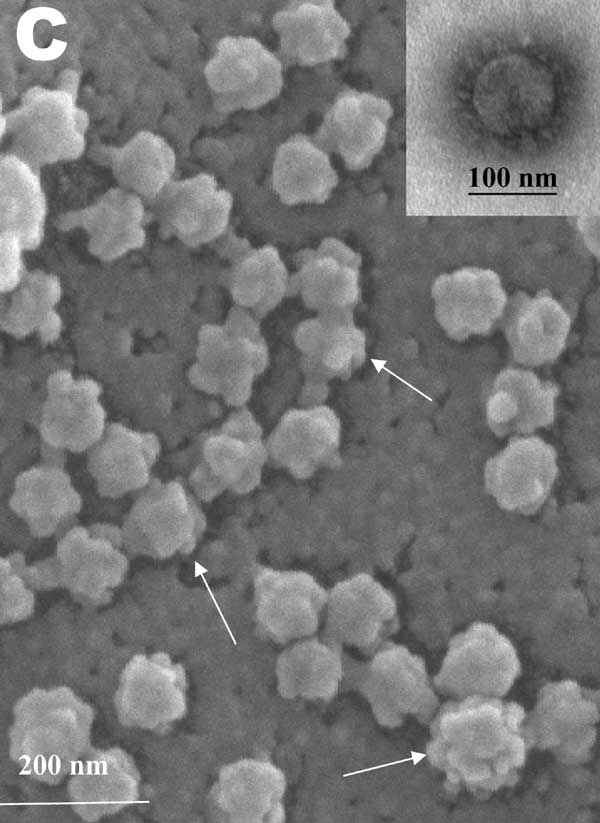 |
| |
||
| |
|||||||||||||||||
|
|||||||||||||||||
|
|||||||||||||||||
| EID
Home | Ahead of Print | Past
Issues | EID Search | Contact
Us | Announcements | Suggested
Citation | Submit Manuscript
Volume 10, Number 11, November 2004 Topographic Changes in SARS Coronavirus–infected Cells at Late Stages of InfectionM.L. Ng,* J.W.M. Lee,* M.L.N. Leong,* A.-E. Ling,† H.-C. Tan‡ and
E.E. Ooi‡ |
||
|
|
   
|
|
| Back to article | |
|
Figure 3. Scanning electron microscopy of Vero E6 cells infected with severe acute respiratory syndrome–associated coronavirus at 24 h after infection. A) Cell surface is covered with extracellular progeny virus particles, and progeny virus are being extruded from or attached to numerous pseudopodia on infected cell surface (arrows). B) A higher magnification micrograph of the virus-clustered pseudopodia (arrows). C) Rosettelike appearance of the matured virus particles (arrows). The scanning electron microscopy image complements the form and structure of the virus seen with negative staining (inset) under transmission electron microscopy. Short and stubby spikes are visible on the virus surface. D) Arrows indicate virus particles being exported from the surfaces of the filopodia. |
|
|
|
|
|
EID Home | Top of Page | Ahead-of-Print | Past Issues | Suggested Citation | EID Search | Contact Us | Accessibility | Privacy Policy Notice | CDC Home | CDC Search | Health Topics A-Z |
|
|
This page last reviewed October 12, 2004 |
|
|
Emerging
Infectious Diseases Journal |
|